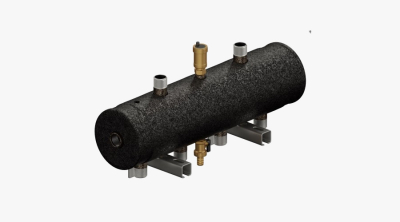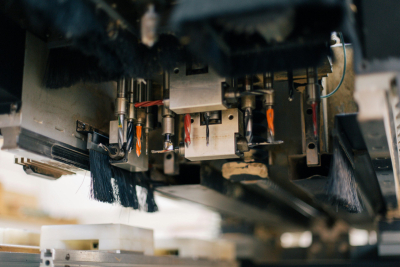Why microcement is a game-changer for modern home interiors
When it comes to modern home interiors, microcement is truly a game-changer. Its versatility allows it to be used in a variety of settings, from kitchens and bathrooms to living rooms and even outdoor spaces. This material is not only aesthetically appealing but also incredibly durable and easy to maintain. Imagine a sleek, seamless surface that complements your minimalist or industrial design perfectly. That's what microcement offers. One of the biggest advantages of microcement is its ability to blend seamlessly with other materials like wood, metal, and glass. This makes it an ideal choice for those looking to achieve a contemporary look. For instance, in a Scandinavian-style interior, microcement can be used to create a clean, cohesive look that enhances the natural beauty of the space. Similarly, in an industrial-style home, microcement can add a touch of raw elegance that is both modern and timeless. Let's talk about the benefits of microcement over traditional materials. Unlike tiles, which can crack and require grout lines that collect dirt, microcement provides a smooth, continuous surface that is both waterproof and stain-resistant. This makes it an excellent choice for wet areas like bathrooms and kitchens. Additionally, microcement is highly customisable, allowing you to choose from a wide range of colours and finishes to suit your personal style. In a recent case study, a homeowner transformed their outdated bathroom into a modern sanctuary using microcement. The result was a sleek, spa-like space that was not only beautiful but also easy to clean and maintain. Another case involved a kitchen renovation where microcement was used for the countertops and backsplash, creating a seamless, elegant look that was both functional and stylish. In summary, microcement is a versatile, aesthetically pleasing, and durable material that can significantly enhance the look and feel of your home. Whether you're aiming for a modern, minimalist, or industrial design, microcement offers endless possibilities to create a space that is uniquely yours.
Visit https://www.festfloor.com/ for more information
Innovative applications of microcement in different rooms
When it comes to home renovations, microcement is making waves for its versatility and aesthetic appeal. In kitchens, this material offers a sleek, modern look that's both durable and easy to clean. Imagine a microcement countertop that resists stains and scratches, or a seamless microcement floor that ties the whole room together. The possibilities are endless, and the results are stunning. In bathrooms, the benefits of microcement are even more pronounced. Its water-resistant properties make it ideal for wet areas like showers and sinks. No more worrying about grout lines getting grimy; a microcement shower is not only practical but also incredibly stylish. The smooth, continuous surface is easy to maintain and adds a touch of luxury to any bathroom. Living rooms and outdoor spaces can also benefit from the unique qualities of microcement. In living rooms, it can be used to create striking feature walls or elegant flooring that complements any decor. For outdoor areas, microcement's durability and weather resistance make it a perfect choice for patios and pool surrounds. It can withstand the elements while maintaining its beauty, making it a smart investment for any home. Here's a quick comparison to help you understand the cost and durability of microcement in different rooms:
|
Room |
Cost |
Durability |
|
Kitchen |
Moderate |
High |
|
Bathroom |
Moderate |
Very High |
|
Living Room |
Low to Moderate |
High |
|
Outdoor Spaces |
High |
Very High |
By choosing microcement for your home renovation projects, you're not only opting for a material that's aesthetically pleasing but also one that offers practical benefits across various settings. Whether it's the kitchen, bathroom, living room, or outdoor space, microcement proves to be a versatile and durable choice.
Colour and texture options: customising your space with microcement
When it comes to customising your space with microcement, the possibilities are virtually endless. This versatile material offers a wide array of colours and textures, allowing you to create a truly unique look for your home. Whether you're aiming for a sleek, modern aesthetic or a more rustic, textured finish, microcement can deliver. Popular Colour Schemes and Texture Combinations:
- Neutral Tones: Shades like grey, beige, and white are timeless and versatile, perfect for creating a minimalist look.
- Earthy Hues: Colours such as terracotta, olive green, and sandy browns add warmth and a natural feel to any space.
- Bold Colours: For those who want to make a statement, vibrant colours like deep blue, rich red, and even black can be used to create striking focal points.
Choosing the right colour and texture for different spaces in your home can be a game-changer. For instance, a smooth, polished finish in a neutral tone can make a small bathroom feel more spacious and luxurious. On the other hand, a textured, matte finish in earthy hues can add depth and character to a living room or kitchen. Here's a quick guide to help you decide:
- Bathrooms: Opt for lighter colours and smoother textures to create a clean, spa-like atmosphere.
- Kitchens: Consider using bolder colours and more textured finishes to add personality and hide wear and tear.
- Living Rooms: Earthy tones and a mix of smooth and textured finishes can create a cosy, inviting space.
By understanding the variety of colours and textures available, you can make informed decisions that will enhance the aesthetic and functionality of your home.
Step-by-step guide to installing microcement in your home
Transforming your home with microcement can be a game-changer, but the installation process requires precision and attention to detail. Here's a detailed, easy-to-follow guide to help you through the process.
- Preparation: Start by preparing the surface. Ensure it's clean, dry, and free from any debris. Any cracks or holes should be filled and sanded down. This step is crucial for a smooth finish.
- Priming: Apply a primer to the surface to ensure better adhesion of the microcement. This step helps in creating a strong bond between the surface and the microcement.
- Base Coat Application: Mix the microcement base coat according to the manufacturer's instructions. Apply the first coat evenly using a trowel. Allow it to dry completely before proceeding to the next step.
- Sanding: Once the base coat is dry, sand the surface lightly to remove any imperfections. This step ensures a smooth and even finish.
- Second Coat Application: Apply the second coat of microcement, ensuring an even spread. This coat will give the surface its final look and texture.
- Sealing: After the second coat is dry, apply a sealer to protect the surface from stains and moisture. This step is essential for the longevity of the microcement finish.
For DIY enthusiasts, it's important to follow these steps meticulously. However, if you're unsure at any stage, it's wise to hire a professional. They can ensure a flawless finish and save you from potential pitfalls. Remember, the key to a successful microcement installation is in the preparation and attention to detail.
Maintaining and caring for your microcement surfaces
When it comes to maintaining and caring for your microcement surfaces, it's crucial to follow best practices to ensure longevity and aesthetic appeal. Regular cleaning with a pH-neutral cleaner is essential. Avoid abrasive tools that can scratch the surface. Instead, use a soft cloth or mop. For stubborn stains, a mixture of water and mild detergent usually does the trick. For minor repairs and touch-ups, having a microcement repair kit on hand can be a lifesaver. These kits typically include a small amount of microcement and a sealant, allowing you to fix chips and scratches easily. It's also advisable to reseal your microcement surfaces every couple of years to maintain their durability and appearance.
By following these guidelines, you can keep your microcement surfaces looking pristine and extend their lifespan. Proper maintenance not only preserves the beauty of your home but also ensures that your investment stands the test of time.








